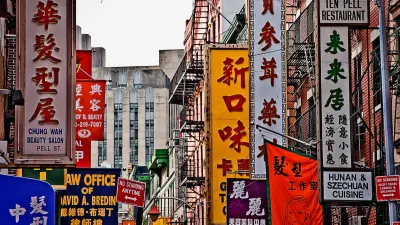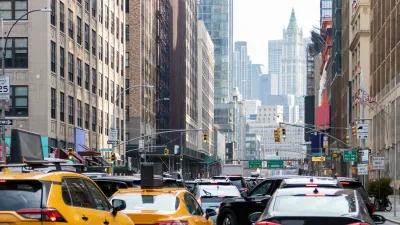A New York Times examination of the conditions of the city’s ubiquitous water tanks reveals unhealthy levels of E. coli and coliform—bellwethers for many varieties of disease-causing microorganisms.
Millions of residents in New York City rely on rooftop tanks to store and disburse water through the city’s high-rises. Surprisingly for such a high visibility figure of the cityscape, however, the water tanks attract very little attention from health inspectors or other regulators, according to the reportage of Ray Rivera, Frank G Runyeon, and Russ Buettner.
To reveal the lurking health risks presented by the city’s water towers, the New York Times took samples from water towers at 12 buildings in Manhattan, Queens and Brooklyn. The samples “found E. coli in five tanks, and coliform in those tanks and three more.”
The city insists that the city’s water storage systems are safe: “City health officials insist that the tanks are safe, and that the laws governing them are adequate,” and “health officials say no cases have ever been traced back to a water tank.”
“The thousands of tanks that dot the skyline are part of a water system that originates at 19 protected lakes and reservoirs in upstate New York…But the vast system of safeguards protecting the water supply virtually ends at the curb. From that point on, it is up to building owners to ensure that their tanks are cleaned, inspected and tested for bacteria annually, as required by the city’s building and health codes.”
However, the city does very little to ensure that building owners are protecting the health of those drinking the water held in their tanks. “The city’s own surveys suggest that nearly 60 percent of the owners do not comply…Building owners are not required to submit proof to the city that cleanings and inspections have been conducted, as they do for elevator and boiler inspections. Until recently, they did not have to provide evidence of the inspections to their tenants.”
FULL STORY: Inside City’s Water Tanks, Layers of Neglect

Alabama: Trump Terminates Settlements for Black Communities Harmed By Raw Sewage
Trump deemed the landmark civil rights agreement “illegal DEI and environmental justice policy.”

Planetizen Federal Action Tracker
A weekly monitor of how Trump’s orders and actions are impacting planners and planning in America.

The 120 Year Old Tiny Home Villages That Sheltered San Francisco’s Earthquake Refugees
More than a century ago, San Francisco mobilized to house thousands of residents displaced by the 1906 earthquake. Could their strategy offer a model for the present?

In Both Crashes and Crime, Public Transportation is Far Safer than Driving
Contrary to popular assumptions, public transportation has far lower crash and crime rates than automobile travel. For safer communities, improve and encourage transit travel.

Report: Zoning Reforms Should Complement Nashville’s Ambitious Transit Plan
Without reform, restrictive zoning codes will limit the impact of the city’s planned transit expansion and could exclude some of the residents who depend on transit the most.

Judge Orders Release of Frozen IRA, IIJA Funding
The decision is a victory for environmental groups who charged that freezing funds for critical infrastructure and disaster response programs caused “real and irreparable harm” to communities.
Urban Design for Planners 1: Software Tools
This six-course series explores essential urban design concepts using open source software and equips planners with the tools they need to participate fully in the urban design process.
Planning for Universal Design
Learn the tools for implementing Universal Design in planning regulations.
Clanton & Associates, Inc.
Jessamine County Fiscal Court
Institute for Housing and Urban Development Studies (IHS)
City of Grandview
Harvard GSD Executive Education
Toledo-Lucas County Plan Commissions
Salt Lake City
NYU Wagner Graduate School of Public Service





























